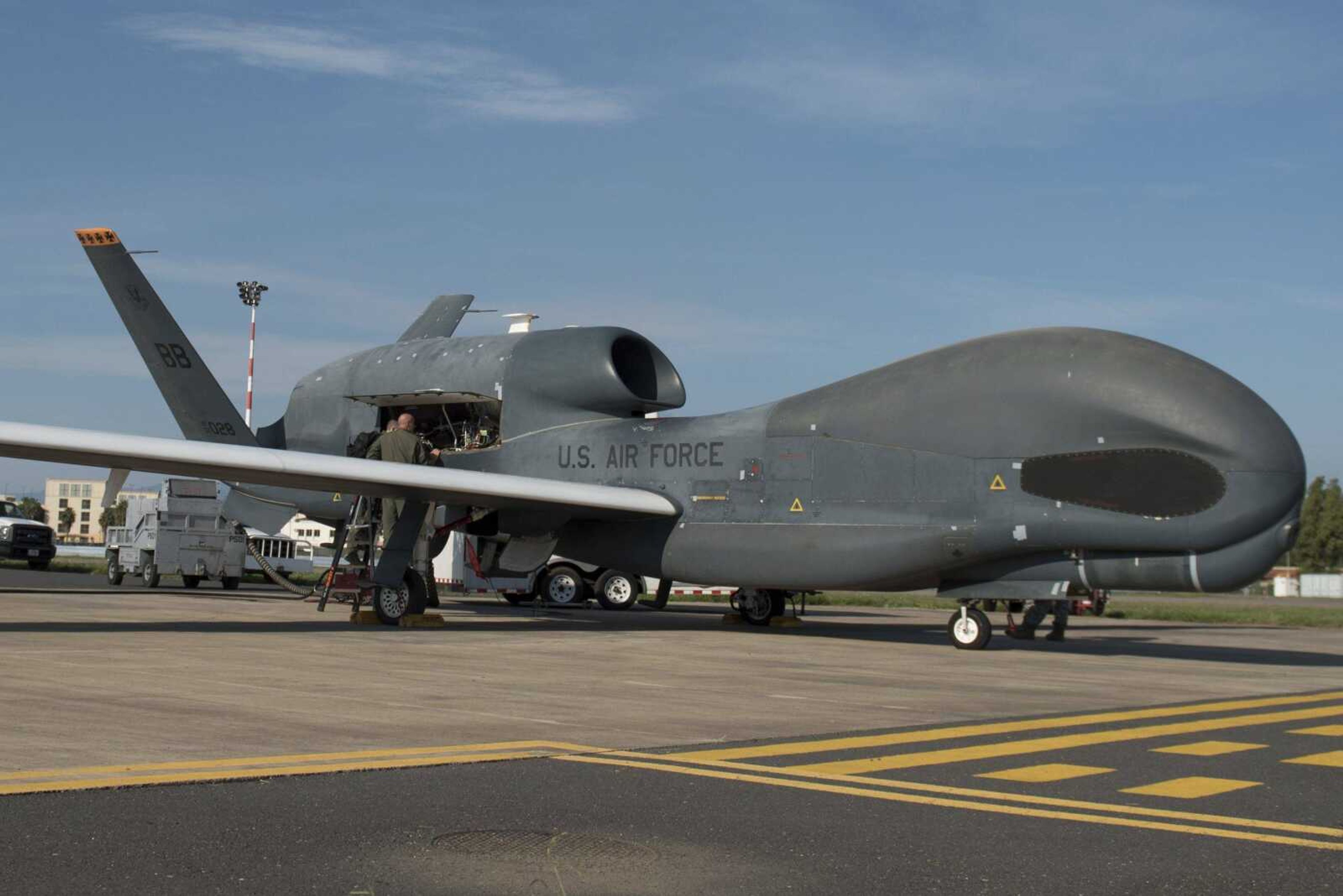Iran shoots down U.S. surveillance drone
TEHRAN, Iran -- Iran's Revolutionary Guard shot down a U.S. surveillance drone Thursday in the Strait of Hormuz, marking the first time the Islamic Republic directly attacked the American military amid tensions over Tehran's unraveling nuclear deal with world powers...
TEHRAN, Iran -- Iran's Revolutionary Guard shot down a U.S. surveillance drone Thursday in the Strait of Hormuz, marking the first time the Islamic Republic directly attacked the American military amid tensions over Tehran's unraveling nuclear deal with world powers.
The two countries disputed the circumstances leading up to an Iranian surface-to-air missile bringing down the U.S. Navy RQ-4A Global Hawk, an unmanned aircraft with a wingspan larger than a Boeing 737 jetliner and costing over $100 million.
Iran said the drone "violated" its territorial airspace, while the U.S. called the missile fire "an unprovoked attack" in international airspace over the narrow mouth of the Persian Gulf and President Donald Trump tweeted "Iran made a very big mistake!"
Trump later appeared to play down the incident, telling reporters in the Oval Office he had a feeling that "a general or somebody" being "loose and stupid" made a mistake in shooting down the drone.
The incident immediately heightened the crisis already gripping the wider region, which is rooted in Trump withdrawing the U.S. a year ago from Iran's 2015 nuclear deal and imposing crippling new sanctions on Tehran. Recently, Iran quadrupled its production of low-enriched uranium to be on pace to break one of the deal's terms by next week while threatening to raise enrichment closer to weapons-grade levels July 7 if Europe doesn't offer it a new deal.
Citing unspecified Iranian threats, the U.S. has sent an aircraft carrier to the Middle East and deployed additional troops alongside the tens of thousands already there. All this has raised fears a miscalculation or further rise in tensions could push the U.S. and Iran into an open conflict 40 years after Tehran's Islamic Revolution.
"We do not have any intention for war with any country, but we are fully ready for war," Revolutionary Guard commander Gen. Hossein Salami said in a televised address.
The paramilitary Guard, which answers only to Supreme Leader Ayatollah Ali Khamenei, said it shot down the drone at 4:05 a.m. Thursday when it entered Iranian airspace near the Kouhmobarak district in southern Iran's Hormozgan province. Kouhmobarak is about 750 miles southeast of Tehran.
The drone took off from the southern Persian Gulf and collected data from Iranian territory, including the southern port of Chahbahar near Iran's border with Pakistan, the Guard said in comments appearing aimed at showing it could track the aircraft.
The U.S. military has not commented on the mission of the remotely piloted aircraft able to fly higher than 10 miles in altitude and stay in the air for more than 24 hours at a time.
Iran used its air defense system known as Third of Khordad to shoot down the drone -- a truck-based missile system able to fire up to 18 miles into the sky, the semi-official Fars news agency reported.
Iranian state TV later broadcast video it described as the moment the Guard launched the surface-to-air missile at the U.S. drone. Chants of "God is great!" could be heard as a fireball appeared in the darkened sky.
Typically, militaries worldwide call out to errant aircraft entering their airspace before firing. It's unclear whether Iran gave any warning before opening fire. The U.S. military said Iran fired on and missed another drone last week near the Strait of Hormuz, the narrow mouth of the Persian Gulf through which 20% of all global oil moves.
The U.S. has been worried about international shipping through the strategic waterway since tankers were damaged in May and June in what Washington has blamed on limpet mines from Iran, although Tehran denied involvement. On Wednesday in the United Arab Emirates, the U.S. Navy showed fragments of mines it said bore "a striking resemblance" to those seen in Iran
The RQ-4 Global Hawk was about 17 miles from Iranian territory when it was shot down by an Iranian surface-to-air missile, said Air Force Lt. Gen. Joseph Guastella, commander of the U.S. Central Command. He said it was an attempt to disrupt U.S. efforts to monitor the Persian Gulf region.
But Salami, speaking to a crowd in the western city of Sanandaj, described the American drone as "violating our national security border."
"Borders are our red line," the Revolutionary Guard general said. "Any enemy that violates the borders will be annihilated."
Iran's Foreign Ministry also said the drone entered Iranian airspace, and Foreign Minister Mohammad Javad Zarif tweeted it would take its case to the U.N. He later tweeted Iran retrieved parts of the drone in its territorial waters.
Connect with the Southeast Missourian Newsroom:
For corrections to this story or other insights for the editor, click here. To submit a letter to the editor, click here. To learn about the Southeast Missourian’s AI Policy, click here.








